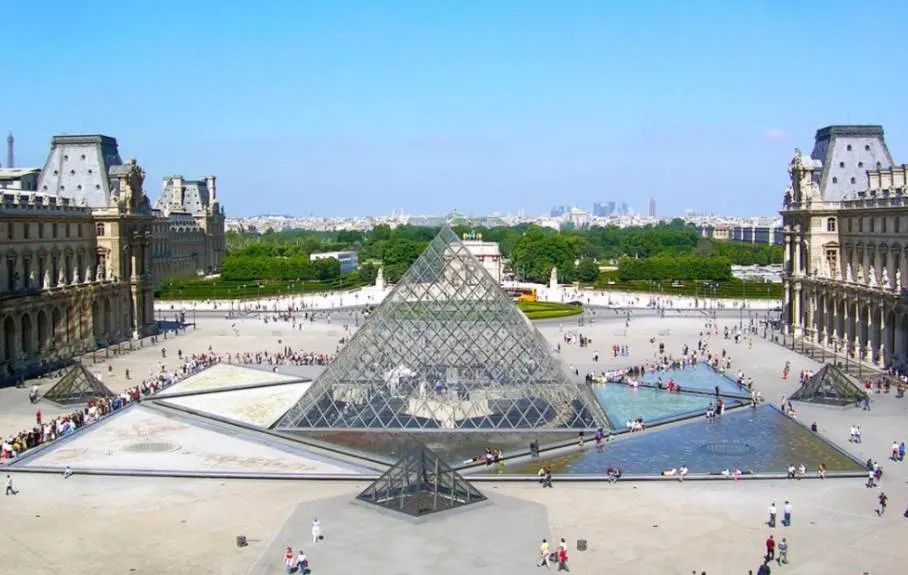It’s one of the most iconic buildings in all of Paris, and in this post, you’ll discover our top list with facts about the Louvre Pyramid.
Please note: This post relates to the Louvre Pyramid. We do have a post related to the Louvre Museum as well!
1. It was designed by a Chinese-American architect
The Louvre Pyramid is the monumental landmark located in the main courtyard of the Louvre called the “Cour Napoléon.” It’s one of the most recognizable landmarks in Paris and a symbol of the city.
It was commissioned in 1984 by the then-president of France François Mitterrand and completed in the year 1989. The pyramid was designed by Chinese-American architect Ieoh Ming Pei (1917-2019).
He was born in Guangzhou in China but moved to the United States in the year 1935 where he completed numerous large-scale projects, including the Dallas City Hall in Dallas, Texas, and the National Gallery East Building in Washington, DC.

2. It serves as the main entrance of the Louvre Museum
The Louvre Pyramid isn’t just an iconic monument, it actually serves a purpose as well. It’s the iconic entrance of the world’s biggest museum, the Louvre in Paris. Yes, it’s here that the Mona Lisa Painting, among thousands of other pieces of high-quality art from all around the world, is housed.
When asked about the project, Pei mentioned that 92,000 square meters (990,279 square feet) of space was needed. Because this was deemed to be impossible near the Louvre, the monumental entrance was made above ground, and visitors are directed below the courtyard to enter the museum.
3. It’s made completely of glass and metal
The structure is completely made of glass panels and metal poles. All the glass panels are rhombus-shaped, which simply means they are shaped like a diamond.
The pyramid itself isn’t that big, especially not when compared to the immense Louvre Palace that houses the museum (and yes, it’s really massive!). The pyramid stands 21.6 meters (71 feet) tall and its square base has sides that are 34 meters (112 feet) long, which means the base covers about 1,000 square meters (11,000 square feet).
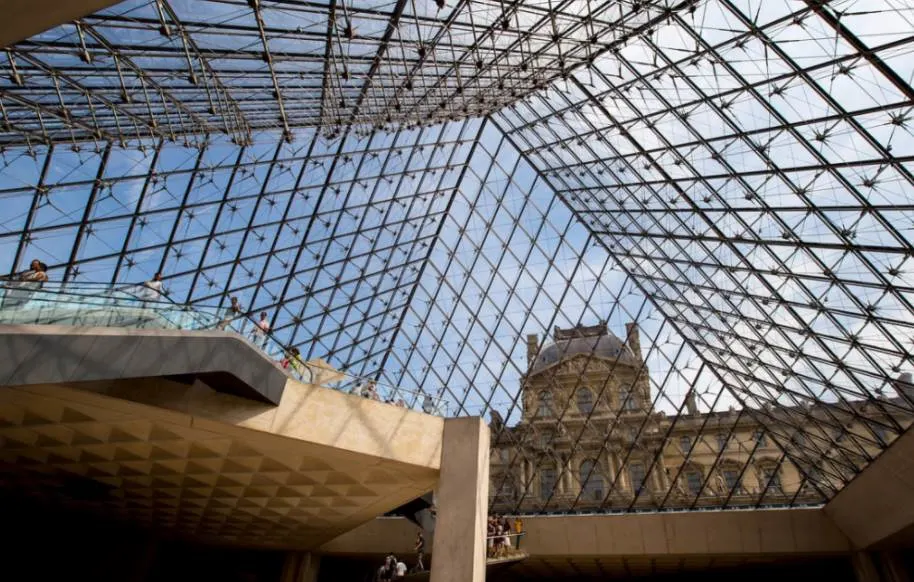
4. It wasn’t received well initially

To say that the pyramid was received poorly is putting things euphemistically. The structure was straight-up ridiculed by the French media.
The biggest concern was that the pyramid didn’t match the French Renaissance architecture of the imposing Louvre Palace.
And then, some people didn’t like the fact that the architect wasn’t French enough to design such an important monument in the city, right in the middle of the Axe Historique of Paris.
Regardless, this is exactly what happened to the Eiffel Tower as well, which would end up becoming the absolute symbol of Paris! Yes, the Louvre Pyramid is a great addition to a city so rich in history.
5. It was once referred to as “Pharaoh Francois’ Pyramid”
While the design and the architect were the biggest targets for the critics, French President Mitterrand wasn’t spared as well.
Because he had been commissioned to build a pyramid, it was jokingly referred to as “Pharaoh Francois’ Pyramid.”
At least they had the decency not to call it “Mummy Francois’ Pyramid,” but still…
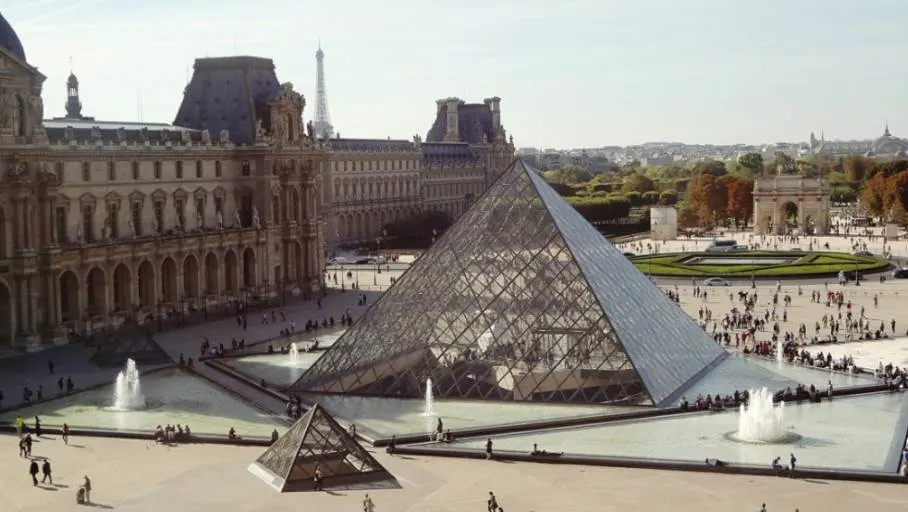
6. The Louvre is way too big for it
One of the strangest facts about the Louvre Pyramid is that it actually became way too small to serve as a proper entrance for the largest museum in the world.
It was originally constructed for a museum that would welcome about 4 to 5 million visitors a year. By 2014, this number had already doubled and at the time of writing this post (July 2020), this number has nearly tripled!
Luckily, measures were taken and between 2014 and 2017, a renovation project was done to solve the issue to expand the capacity.
7. Are there exactly 666 glass panels in the Louvre Pyramid?
If you’re into conspiracy theories, then perhaps you might wonder if the theory relating to the number of glass panels in the pyramid is true or not. In Dan Brown’s “The da Vinci Code,” this theory resurfaced and it claimed that the pyramid consisted of exactly 666 panels, a number often associated with Satan.
Well, we’ll have to disappoint you because the number of the beast isn’t 673, and that’s exactly how many glass panels were used to construct this iconic landmark!
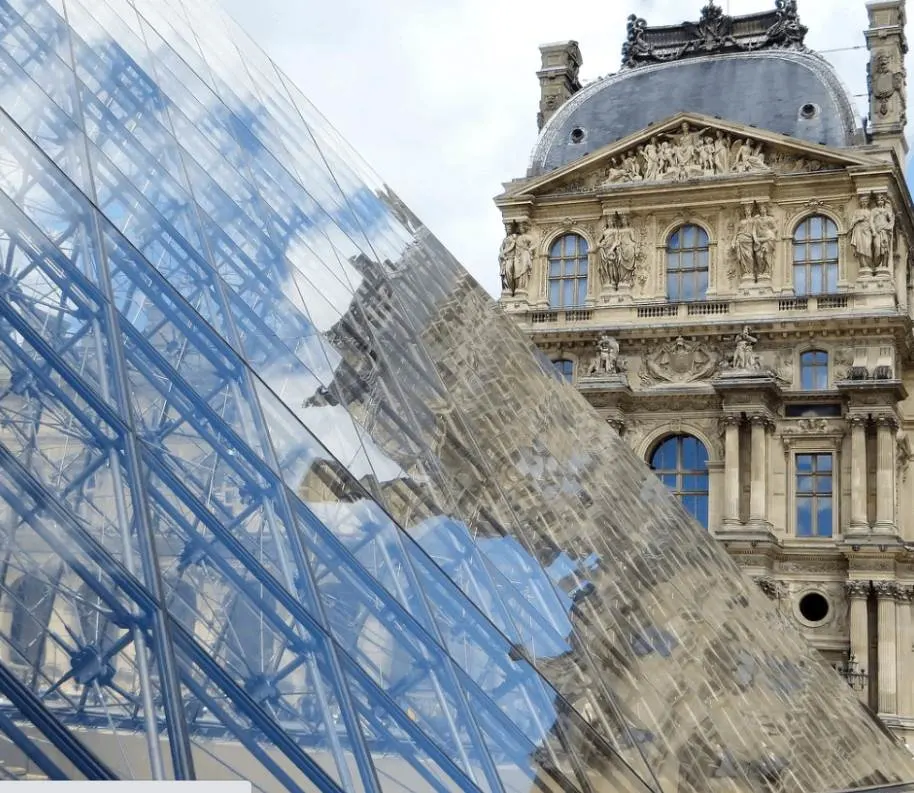
8. There’s an inverted pyramid in front of the Louvre as well
The Louvre has an adjoined shopping center called the “Carrousel du Louvre.” This shopping mall has another interesting monument called the “Pyramide Inversée,” which means an “inverted pyramid.”
This pyramid is basically an upside-down and smaller version of the main Louvre Pyramid and can be seen when leaving the museum.
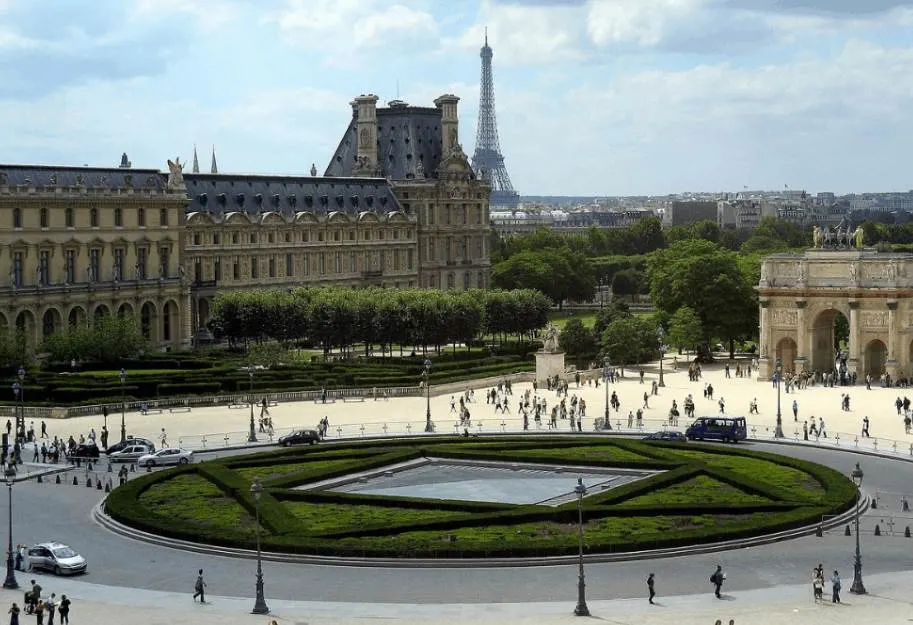
9. It’s not the architect’s only glass pyramid
After Pei had completed the Pyramid of the Louvre he incorporated the same design in at least 2 more buildings. These include the pyramids on the roofs of the IBM Somers Office Complex in Westchester County, New York, and the pyramid concept at the Rock and Roll Hall of Fame in Cleveland, Ohio.
The overall concept of a monument serving as the entrance of a museum was copied for the Museum of Science and Industry in Chicago as well.
